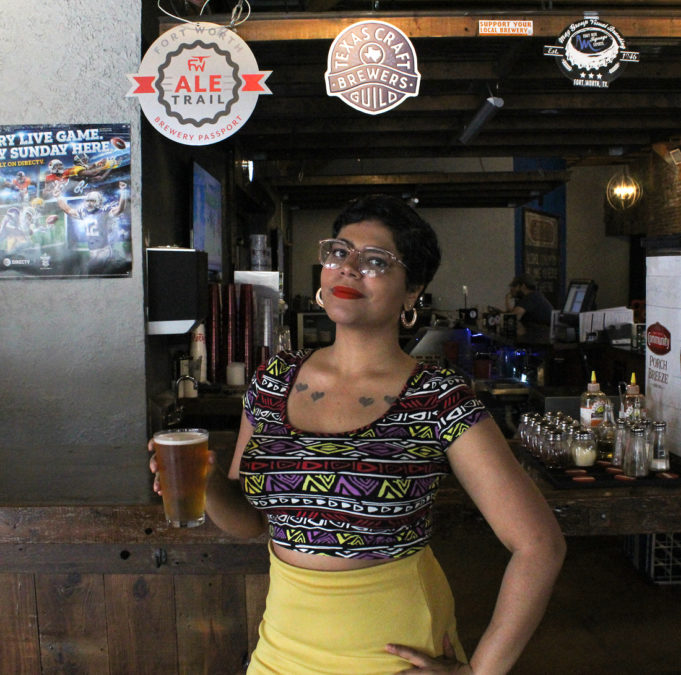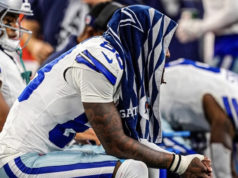Brewery owners and craft beer consumers here and across the United States are overwhelmingly white and disproportionately male. The dearth of persons of color and women in upper management or head brewer positions within the craft beer industry hasn’t gone unnoticed.
James Beard Award-winning author Dave Infante penned “There Are Almost No Black People Brewing Craft Beer” for Thrillist a few years ago. He cited a study by the craft beer trade group Brewers Association that found 86 percent of craft beer in the United States is guzzled by white people. He went on to hypothesize that persons of color may not feel welcomed in the predominantly Anglo environment. Infante quoted Garrett Oliver, a black man and brewmaster at Brooklyn Brewery, who said that larger systemic racism problems within the United States are to blame. In other words, getting to the top rungs of any industry poses unique challenges for women and ethnic minorities. A glance at the profile photos of Fortune 500 company executives bears this out in stark, white detail.
Locust Cider taproom manager Lou Littlefield first brought the topic to my attention via email.
“The simple fact is, I [hardly know] any people of color in this industry,” she said. “I don’t think it’s anyone’s fault or blame needs to be pointed, but it is very much an industry dominated by white men. I think there should be attention brought to that lack of diversity.”
Fort Worth’s breweries and craft beer pubs do have notable women owners/managers. Erin Rahr, president and co-founder of Rahr & Sons Brewing Co., is the most prominent female in a leadership position. The soon-to-be-open brewpub Funky Picnic Brewery & Cafe has two female co-founders, Samantha Glen and Jenni Hanley. There’s also Bearded Lady owner Shannon Osbakken, who staffs her gastropub with women and people from various ethnicities and sexual orientations at all staffing levels, from servers to managers. It’s not that diversity isn’t sought after by brewery owners, one industry expert told me, but the good intentions aren’t translating into meaningful hiring practices within brewpubs and breweries.
Littlefield has extensive work experience in the craft beer industry. Four years ago, she helped open Fort Worth’s Brass Tap as a wait staffer before filling the same role at The Bearded Lady. Her current job at Locust Cider makes her the only woman of color in a leadership position at any Fort Worth craft brewery/cidery.
“When I see someone of color in this industry, I think, ‘Oh, my God. There’s another person of color working,’ ” she told me, referring to her infrequent moments of surprise.
Littlefield could name only one beer sales representative in North Texas who is black. When asked for an example of how many black people typically attend craft beer events, she said that, at a typical big beer festival, she sees maybe 100 black men and/or women among a crowd of 5,000 festivalgoers. Even progressive neighborhoods like the Near Southside don’t get a free pass from her when it comes to diversity issues. Having worked in the service industry along West Magnolia Avenue while at The Bearded Lady, Littlefield said she rarely if ever met black employees at any of the restaurants, bars, and shops along that stretch of gentrified road.
Many black Americans, she said, feel unwelcome in neighborhoods where there are no black employees and even fewer customers of color.
“It needs to be talked about,” she said.
She knows she can’t solve the societal and public policy realities that confer privilege toward whites, but she said she can be an advocate for increased diversity among Fort Worth’s breweries and its first production cidery. Fort Worth’s breweries, she said, need to meaningfully include diversity as a core tenet in hiring.
Beyond that, she said, craft beer breweries that have come out on the winning side of the gentrification of historically black neighborhoods (like the Near Southside) need to acknowledge the black community that has and continues to be pushed out of up-and-coming neighborhoods.
The craft beer industry, through the Brewers Association, recently made diversity a country-wide topic of discussion when it brought on J. Nikol Jackson-Beckham as its first “diversity ambassador.” Jackson-Beckham, a black woman, teaches communications at Randolph College. I asked her how craft beer came to be predominantly produced and consumed by white men.
“This isn’t a conscious decision on the part of craft brewers,” she told me in a phone interview. “It’s a reflection of the larger social and economic condition of the United States. The 1970s and ’80s were a time when getting capitol was a challenge for women and people of color.”
Those early decades of the craft beer movement were crucial for pioneering breweries like Sierra Nevada and Anchor Brewing Company, among others. As white-owned breweries grew, the industry developed into what Jackson-Beckham describes as a “cultural niche” that further entrenched the beer movement along racial lines.
There’s plenty to be hopeful for, though, she said. The diversity ambassador said that the brewery owners with whom she has spoken acknowledge the important role of women and persons of color, both on the production and consumer side of craft beer. She encourages breweries to include racial and gender diversity as part of their business models. Breweries frequently donate beer to community events, she added, but minority communities are often unaware that they can request craft beer donations. Reaching out to Hispanic event organizers or Juneteenth celebrations is one simple way to pump craft beer into underserved communities, she said.
“There’s an economic motivator to do this,” she said. “Craft beer is approaching 7,000 breweries across the United States. However, overall sales growth has slowed. The pie is not getting bigger. If you look at craft beer consumers, the vast majority are millennial and Gen-X white males. It’s silly to fight a war of attrition over a narrow demographic group. If the industry is going to be healthy and to survive, it needs to be more inclusive. That’s what a healthy industry looks like.”












